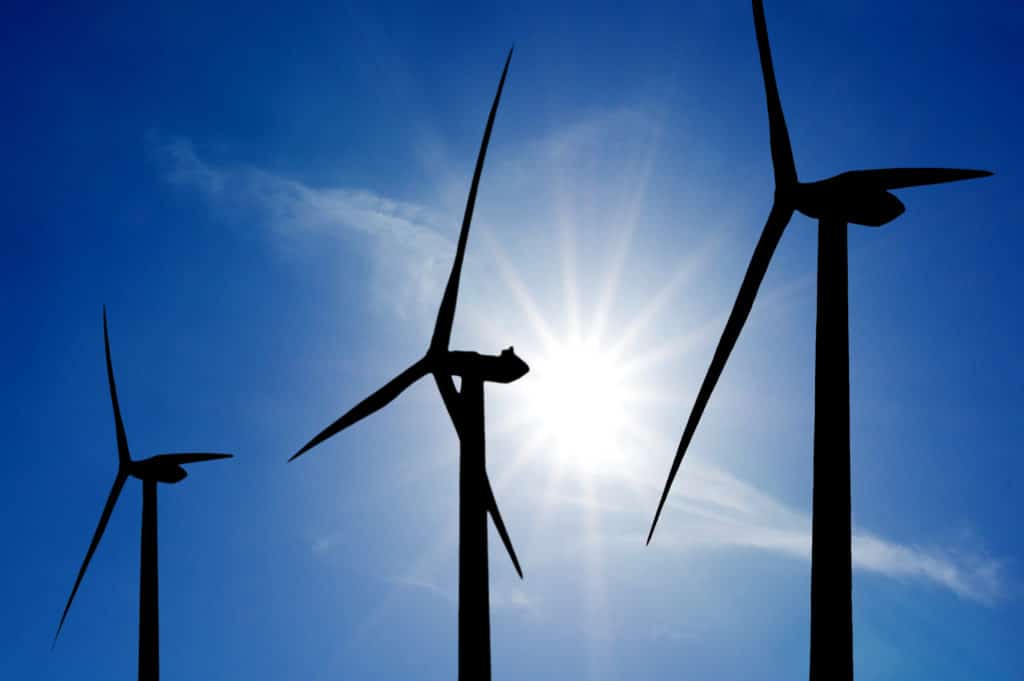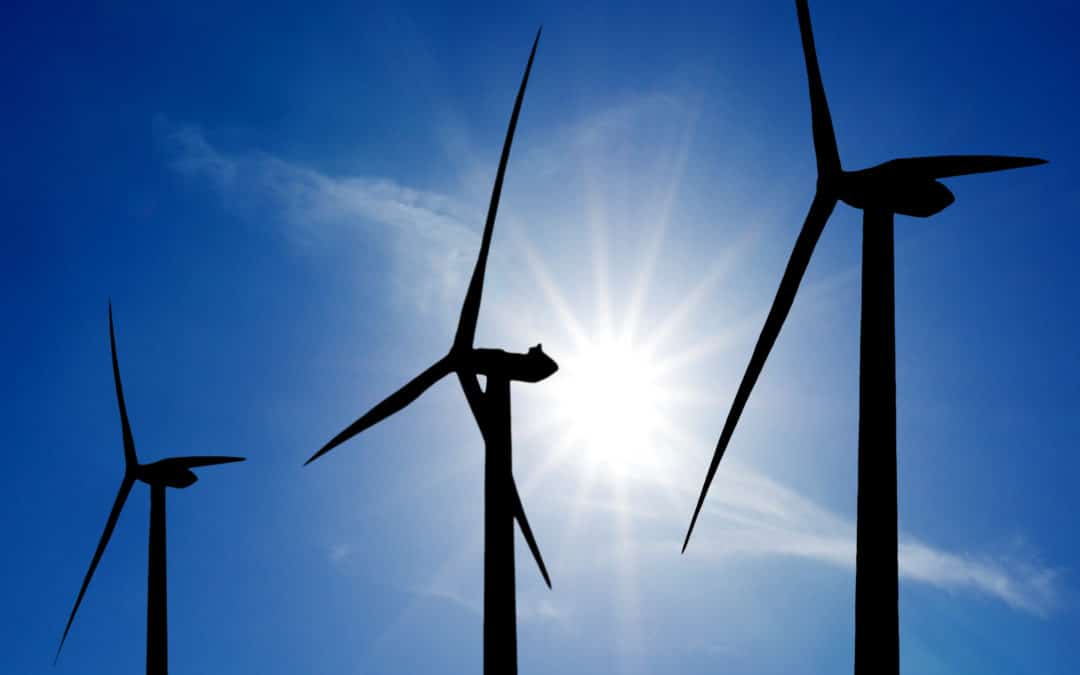The exponential growth of wind power shows little sign of slowing down. Oil price fluctuations and shale gas have dented growth in the US, but subsidies continue to support new installations. Europe, China, India and South Africa are major growth areas.
By nature, the farms are a challenge for protective coatings. They inhabit exposed areas, particularly the offshore and nearshore farms that have to contend with high winds, rain and salt water. Coating repairs are difficult and expensive, so owners and asset managers want longterm protection – usually for the expected life of the tower.
While towers are familiar territory for coatings manufacturers, the blades have created a new set of problems. Turbine blades on common designs are around 100 metres long and rated to survive wind speeds up to 60 metres per second (m/sec) – around 134mph. At the tips they reach speeds of up to 190 mph. Leading edges bear the brunt of this speed and the problem of durable protection has not yet been fully solved, despite some inventive and possibly outlandish efforts: current research subjects include owls, sharks, and dinosaurs.

Market pressure
Besides longevity of protection, the other, more down-to-earth challenge for coatings manufacturers is the price owners are willing to pay. Anders Clausen, Group Power Generation Segment Manager at Hempel, says “Capital expenditure on wind turbines is 95% installation, so owners are looking to minimize the cost and reduce the time needed to prepare them. Mostly we have been used to seeing 3-coat systems, but for onshore towers we are increasingly moving towards 2-coat systems to reduce the coating time by a third. Offshore foundations particularly need a heavy-duty epoxy.
“We recently examined first-generation offshore towers which were built in Denmark in the 1990s and were able to report no coating problems. For the towers and foundations, lifetime coatings of 20 – 25 years are usually achievable and the problem is often in relation to bringing down costs and time.”
Proven products
Clare McDermott, Wind Market Manager at AkzoNobel, agrees: “Owners and asset managers will typically be looking for 15 years corrosion protection for onshore farms, but we are now seeing expectations of up to 30 years for offshore structures.
“We tend to recommend our most proven products as we know, for example, that a high-build epoxy system such as our Interzone 1000 can last that long.
“Cost and ease of application are crucial in this market. The fabricators are not necessarily coatings specialists so we like to keep it simple.”
Foundations
The main components of the towers are the foundations, the transition pieces that connect them to the towers (usually painted yellow in offshore farms), the towers and the blades. Nacelles surrounding the generator gear are sometimes made of steel, sometimes of composites.
Clare McDermott continues: “In offshore conditions the monopile foundations often rely mainly on cathodic protection for the sections which will remain underwater, although we are starting to see some use of coatings there. The transition pieces are in the splash or tidal zone and need the greatest amount of protection. Warm waters actually create a more aggressive environment for corrosion than the North Sea.
“Marine fouling can be an issue. It was probably not really considered with early installations, but heavy build-up of fouling does occur and this has to be removed for inspections. A fouling solution such as Intersleek would be a potential solution, but cost constraints generally lead the owners towards cheaper options. A longer-range view, taking into account future maintenance requirements, might lead to a different approach.
“When coating repairs are needed we have solutions such as Interzone 954 which can be applied in the tidal zone and can be immersed after as little as 90 minutes, or Interzone 101 which can be applied to fully immersed sections.
Towers
Towers requires different levels of protection depending on their environment category, measured on a C1 to C5 scale according to the industry standards BS EN ISO 12944 and ISO 9223.
Anders Clausen continues: “Offshore towers represent a higher risk of corrosion and far more expense if there is any coating breakdown, so 3-coat systems are still the most common. It can cost an owner 10 – 15,000 Euros a day for maintenance or repair of an offshore turbine.
“For the onshore towers we normally recommend a 2-coat or 3-coat system, depending on the severity of the environment. The 2-coat systems are sufficient to cope with up to a C4 environment – worse environments than that, C5, are usually only found nearshore or offshore.
“The 2-coat applications give us easy application, with a coat of epoxy and a topcoat of polyurethane which provides UV stability. The 3-coat system would use an underlying zinc epoxy primer, which in effect acts as a sacrificial coating in the event of other layers breaking down. 50 – 70 µ was common for this layer but we found that only 25µ of that layer effectively used the zinc content, so our newer products like Avantguard can be applied but actually take advantage of the zinc content throughout the entire film.”
Some manufacturers are now using a thermal sprayed aluminium base, needing only 2 additional coats. AkzoNobel, like Hempel, are also working on development of a 2-coat system that could survive C5 environmental conditions. But in an industry that has grown so quickly there is little standardization.
Clare McDermott says “There are no standard inspection intervals across the industry as yet – some companies will do an annual inspections and others might have a 3 or 5-year interval. Again this mostly comes down to cost decisions on the part of the asset managers and it is often quite ad hoc.
“The industry is still relatively new and owners and managers are still learning as they get more experience. Possibly the biggest issue is that no general standards have been developed and so each manufacturer has their own standards and required tests for coatings – it does make it harder to develop a generic solution.”
Blades
Being made of composites, blades do not suffer corrosion. Anders Clausen says: “The blade tips can be travelling at speeds of up to 250 or 300 kilometres per hour so there are considerable stresses. The problem there is one of erosion, especially when the blades can be travelling through rain at these high speeds. Solutions include both coatings and ‘helicopter tape’ – a similar type of film that is applied to helicopter rotor blades. There is a lot of work being done by various paint companies to look at different possibilities and I would say that a final solution has not been determined yet.
“Manufacturers have different products so one has to investigate what is needed with each manufacturer individually. Usually the first coating would be a filler to provide a smooth substrate, followed by a polyurethane coating to maintain the colour of the blade. The leading edge requires special protection, and there are different solutions on the market – usually it is another polyurethane coating with a thickness up to 1000µ. Helicopter tape is becoming much less popular since it is quite cumbersome to apply, and there can also be adhesion problems.
“Maintenance on the blades is expected to be needed every 3 to 5 years, and of course this is very expensive even for onshore towers – offshore it is even more so. “
Getting up close
When coatings need to be inspected, or when repairs are called for, access is available only by lift equipment or rope, although drones are also starting to play a part in some inspections. Demand for rope technicians has created its own boom industry.
Specialists Mistras are based in the US but have operations centres covering all major areas worldwide. Alex Mountain of their Welsh-based office is involved in running repair operations repairs on towers and blades throughout Western Europe and beyond, frequently on machinery supplied by brand leader Siemens. He says: “Mostly the work is what is known as a Blade B repair, where our technicians would be fixing light damage to blades – sanding, applying new filler and then a topcoat. We also deal with more serious damage, known as Blade C and D repairs, which call for actual fibreglass repair.
“Getting the materials up to the technicians is hard work, but getting a lift platform up the tip of a blade can be a nightmare even for onshore turbines. There are new fillers and topcoats coming out, for example a new filler which goes off in 5 minutes.
“Repairs are very seasonal, especially around Europe – current fillers can be applied in conditions down to 10º C, but new products will be able to go on down to 5º C. We can go out in wind conditions up to 12 m/sec, but near the tip it would usually be less than that as there is a lot of bucking and buffeting – 8m/sec would be more usual near the tip but we would assess it on the ground.”
Mistras usually use Carboline’s Windmastic as the top coat, a weathering resistant polyurethane with high abrasion-resistant qualities specially designed for laminated turbine rotor blades. Mountain says that a blade repair might take as little as an hour or as much as 2-3 days, depending on severity of damage. Once their team arrives on site they can usually be set up to start work in an hour to an hour and a half.
He continues: “Business is certainly good – there are obviously a lot of new towers going up but also the earlier ones are getting older and need more repairs. In the US our guys have been very busy with power curve upgrades – putting new pieces on the blades to increase efficiency”
Owls, Sharks and dinosaurs
The technology has advanced quickly since the first windfarm, consisting of 20 turbines, was built in New Hampshire in 1980. Ironically that first farm failed through turbine failures and lack of wind, but the first offshore windfarm, built in 1991 at Vindeby, Denmark and consisting of 11 450kW turbines, is only now due for decommissioning. In fact the first windmill design for electricity production, by Professor James Blyth of Anderson’s College, Glasgow, was used to power his home for 25 years.
Now Danish firm Dong Energy are moving ahead with preparations for the largest wind farm yet, 75 miles off the Yorkshire coast. Due to come online in 2020, it will have 190-metre turbines capable of providing enough power for a million homes and be the first offshore facility to exceed 1 gigawatt capacity.
As the installations grow, coatings manufacturers and researchers are leaving few stones unturned to solve the intractable problem of blade protection.
Siemens are working on ‘DinoTails’ that resemble the back plates of a stegosaur and increase the blade’s area, adding lift and power, while reducing noise and turbulence. Researchers at the University of Cambridge (Mass.) have meanwhile been looking at how owls are able to fly silently when hunting, and are proposing an approach based on their wings, which have microfeathers on the leading edge.
Anders Clausen adds: “Some researchers have been working on a product similar to sharkskin, with the idea that this can also reduce drag. Another idea which is more advanced is to use replaceable plastic panels on the leading edge.” He concludes: “I would say there is still more work to be done before a final solution is really accepted in the industry.”

